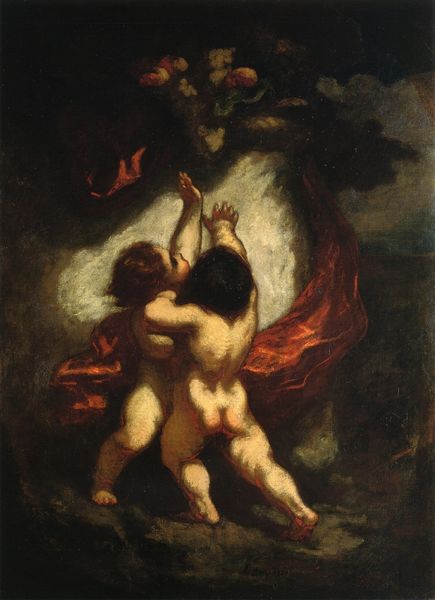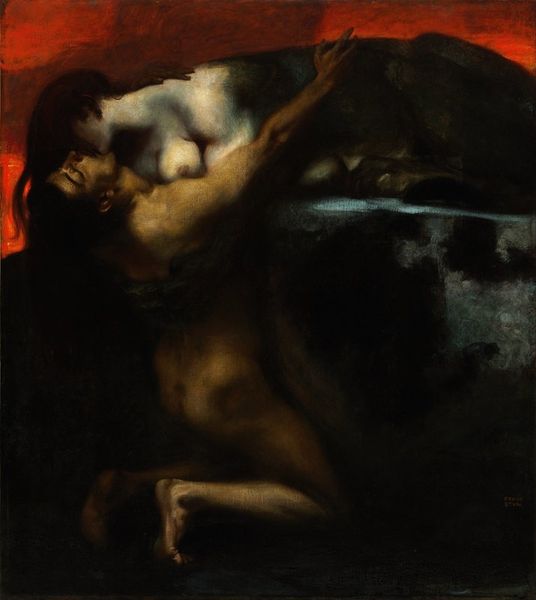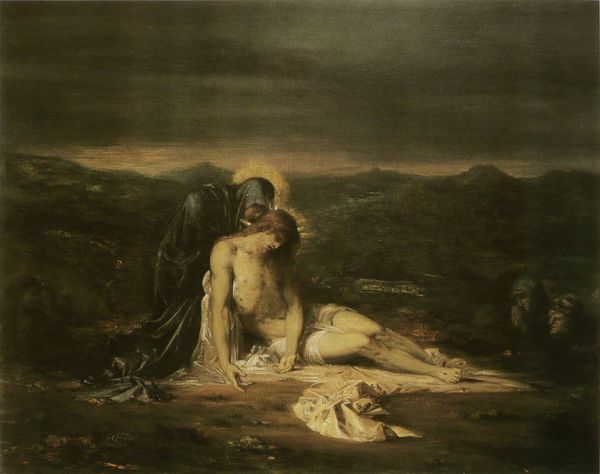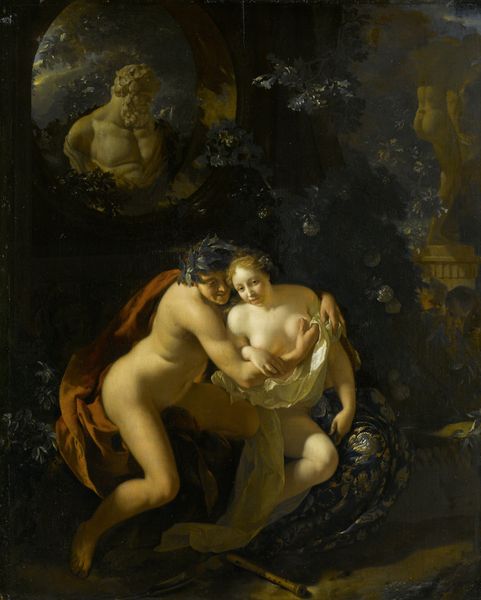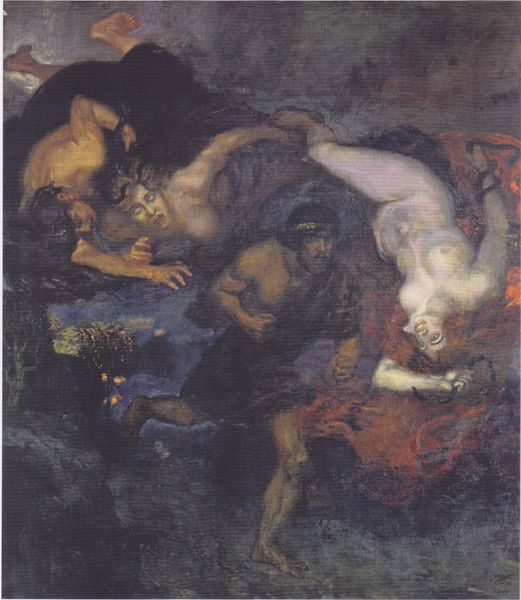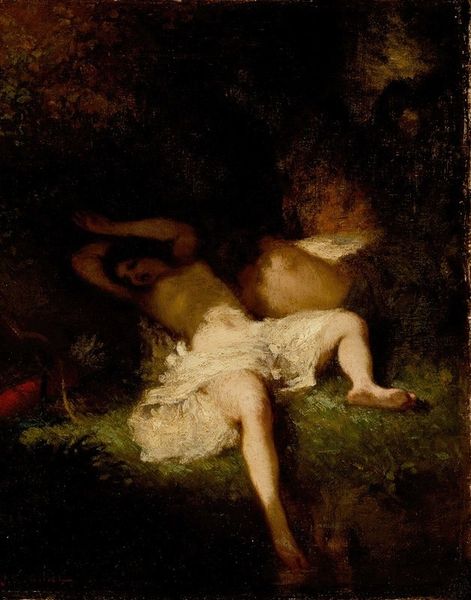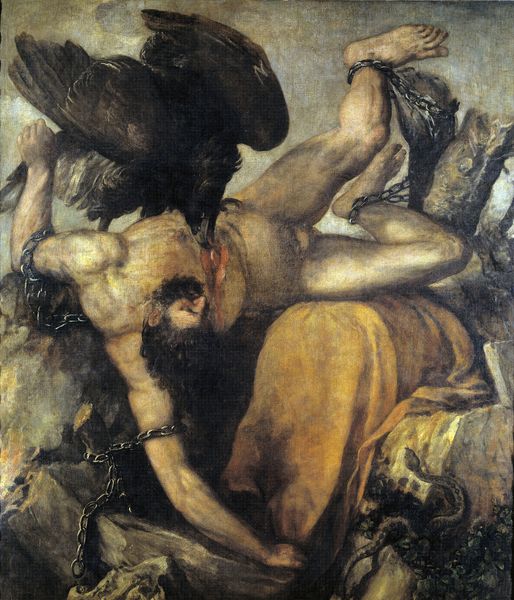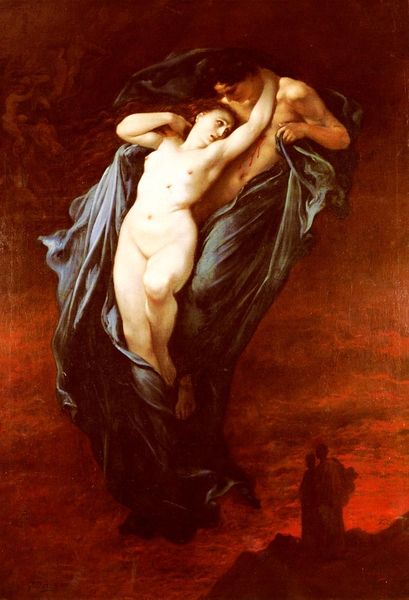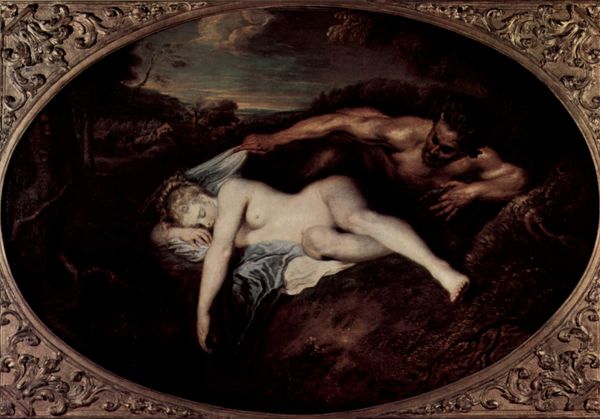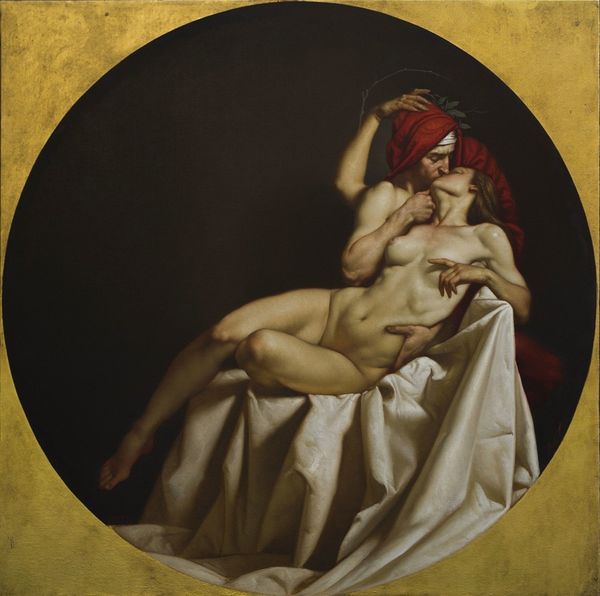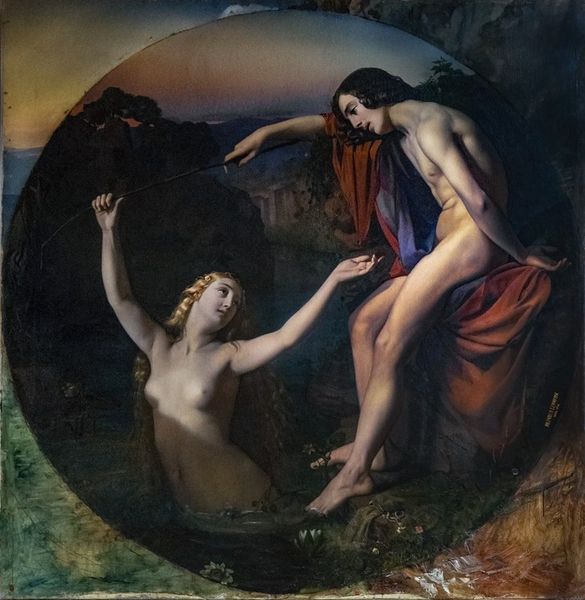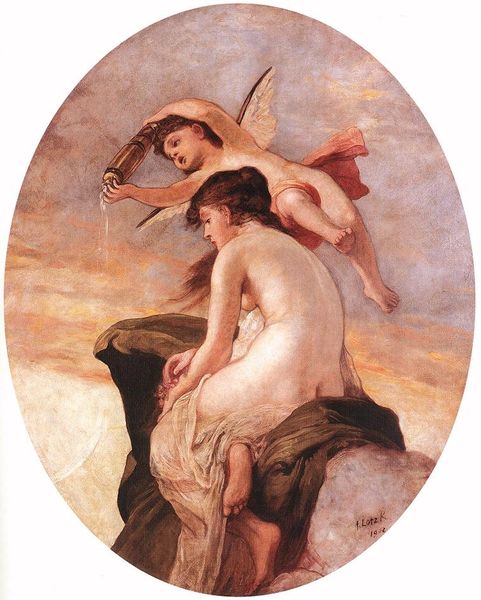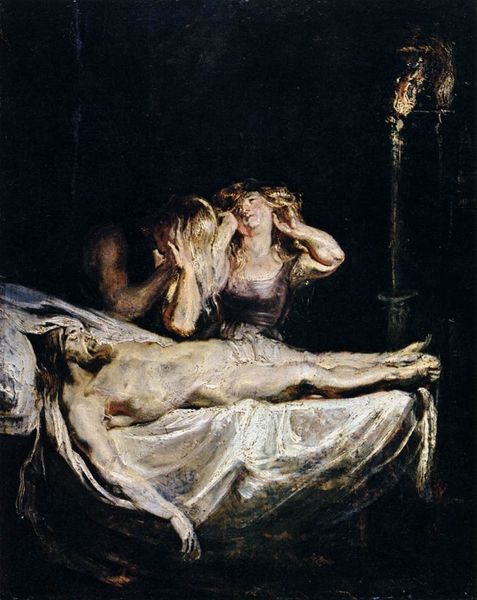
Dimensions: support: 864 x 864 x 26 mm frame: 1184 x 1184 x 185 mm
Copyright: CC-BY-NC-ND 4.0 DEED, Photo: Tate
Editor: Here we have "The Parting of Hero and Leander" by William Etty. It looks like an oil painting, and the embracing figures seem to be the focal point, but the darkness surrounding them is striking. How would you interpret the relationship between the figures and the void? Curator: Notice the masterful manipulation of chiaroscuro. The stark contrast illuminates the sensuous embrace, rendering the figures almost sculptural. Observe how Etty uses the crescent moon as a compositional device, mirroring the curve of their bodies, adding a celestial dimension to their earthly passion. Editor: So, the darkness isn't just background; it's actually enhancing the drama. Curator: Precisely. The darkness serves as a visual metaphor, amplifying the emotional weight of their parting, and reminding us of the tragic fate that awaits them. Editor: That’s a fascinating way to look at it; I didn't consider how the moon and shadows play such active roles. Curator: Considering the formal elements gives access to new understandings.
Comments
tate 6 months ago
⋮
http://www.tate.org.uk/art/artworks/etty-the-parting-of-hero-and-leander-n05614
Join the conversation
Join millions of artists and users on Artera today and experience the ultimate creative platform.
tate 6 months ago
⋮
Hero was a beautiful priestess of Venus who lived at Sestos. She was deeply in love with a youth called Leander who lived at Abydos on the opposite shore of the Hellespont - a narrow strip of water now known as the Dardanelles. The lovers would meet at Sestos by night after Leander had swum across the channel, guided by a burning torch which Hero held aloft. One night, returning home, Leander was drowned in a storm. Gallery label, January 1990
